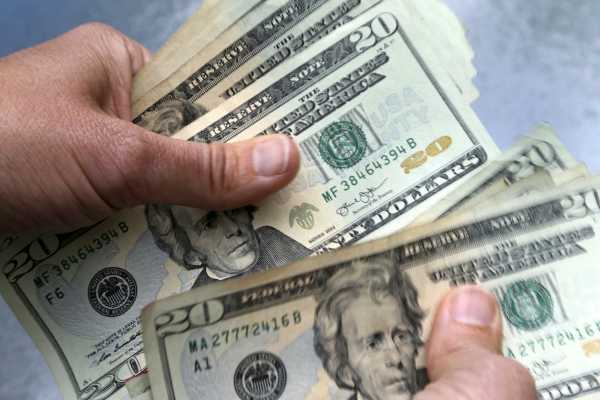
The US economy shrank in the first half of the year, but in the third quarter, it started growing again — which some economists say is an optimistic sign that the country isn’t in a recession now. But underlying factors show the economy is clearly slowing down, they say.
The country’s GDP grew at a 2.6 percent annual rate in the third quarter, according to Commerce Department data released on Thursday. The growth was mainly driven by trade: American companies exported more goods and services, and imports dropped. Meanwhile, key components of the report — consumer spending and residential investment — reflected weaker economic conditions.
Although the two consecutive quarters of negative GDP earlier in the year met a common but unofficial definition of a recession, many economists said at the time that the labor market was still strong and the country wasn’t yet in an economic downturn. Economists and forecasters have warned about a potential recession in the next year, however, as the Federal Reserve continues to raise interest rates to bring inflation under control.
An economic slowdown is welcome news for Fed officials, who have said that the economy will need to cool in order for stubbornly high inflation to come down. As higher interest rates make borrowing money more expensive, the idea is that demand should slow and people will stop buying so many things. That should lead to a drop in prices over time. But the Fed also risks tipping the economy into a recession, since businesses could decrease hiring or lay off workers as a result.
The labor market is still strong now. Employers have been adding hundreds of thousands of jobs to the economy each month and the unemployment rate stands at 3.5 percent, a half-century low. But economists say the data in the GDP report reflects an economy that is already cooling, and more pain is likely ahead.
Consumer spending and the housing market are weakening
Consumer spending, which makes up about two-thirds of GDP, is slowing down. According to Thursday’s report, consumer spending grew 1.4 percent on an annualized basis compared to 2 percent in the second quarter. Spending on services rose, while spending on goods fell for the third consecutive quarter.
Michael Gapen, the head of US economics at Bank of America, said it was clear that demand was moderating and he expected the Fed’s interest rate hikes to continue to weigh on the economy. He said it was “more likely than not” that the country would enter into a recession next year.
“The underlying economy is slowing and growth is positive, but it’s below trend,” Gapen said.
Mark Zandi, the chief economist at Moody’s Analytics, said the biggest drags on growth were housing and commercial construction. The housing market, one of the most interest-rate sensitive sectors, has continued to weaken as mortgage rates have shot up and demand for homes has fallen. Residential investment fell 26.4 percent on an annualized basis after falling 17.8 percent in the previous quarter.
Earlier in the pandemic, mortgage rates hit record lows, leading to potential buyers flooding the market and pushing up home prices. While home prices aren’t rising as rapidly as they were last year, they still remain much higher than they were before the pandemic. On Thursday, the 30-year fixed mortgage rate also reached 7 percent, the highest since 2002, according to Freddie Mac data. The combination of both soaring mortgage rates and steeper home prices has priced out potential buyers from the market.
Although Zandi said the data “clearly confirms that the economy is not in recession,” he said economic conditions would be uncomfortable moving forward. Zandi said he was predicting a 50 percent chance the United States tips into a recession next year.
“Going forward, it’s going to be a bit of a struggle,” Zandi said. “We can count on consumers and businesses doing their part, but I don’t think we can count on them doing any more than that.”
And economists say the boost from rebalancing the pandemic-induced trade deficit will likely be short-lived as the American dollar remains strong and the global economy slows.
“The global economy is very weak. Europe is in recession and China is struggling,” Zandi said. “And second, the dollar has gone skyward, and that makes our exports expensive and our imports cheaper. That makes it a lot more difficult for trade to add anything to growth. It’s going to be a drag.”
Although some economists say they aren’t expecting major revisions, the numbers in the GDP report do go through several revisions as more economic data comes in. The Commerce Department will release its first revision of the third-quarter report on November 30.
Will you support Vox’s explanatory journalism?
Millions turn to Vox to understand what’s happening in the news. Our mission has never been more vital than it is in this moment: to empower through understanding. Financial contributions from our readers are a critical part of supporting our resource-intensive work and help us keep our journalism free for all. Please consider making a contribution to Vox today.
Sourse: vox.com






